|
Syracuse City Hall |
|
233 East Washington Street
|
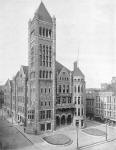
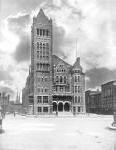
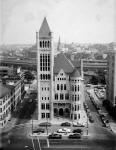
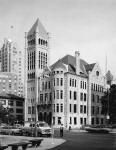
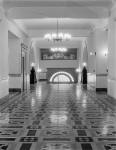
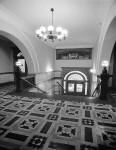
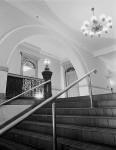
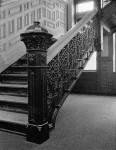
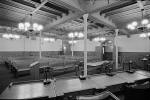
|

1925
View from the Yates Hotel (since demolished).
The sign above the main entrance greeted passengers disembarking from trains that stopped in front of City Hall on Washington Street (just below the picture frame).
Source: Onondaga County Library
Before today's City Hall was erected, a smaller "City Hall" once stood on this site. A bell tower atop this building had became an important feature in the life of the city. It was rung as a fire bell, summoning volunteer firefighters. It was also sounded to commemorate important occasions, both happy and sad.
The brass bell was removed from the old City Hall before its demolition and temporarily installed in a makeshift tower on Columbus Circle. When the new building was nearly complete and it came time to move the bell to the new tower, Colton would not allow it. He said he did not want his new tower defiled by mechanical equipment. Mayor Kirk felt strongly that the bell belonged in the new tower and had Colton removed from the project, replacing him with his assistant, Frederick A. Whelan. It was Whelan who oversaw the final stages of construction -- and installation of the bell in the tower. But not all agreed with the Mayor about the importance of the bell. Some thought it was an extravagance. The Mayor's championing of this issue was thought to be one of the factors leading to his defeat in 1891.
The old bell resumed its public functions in the new tower, and continued to do so for nearly 50 years. It rang for the last time on Armistice Day, 1939 and was melted down a few years later for use by the Allied troops in World War II. The bell tower remained silent, and empty, until 1987 when the Rotary Club donated an electronic carillon for the tower. For sentimental reasons, a brass-plated aluminum bell was also installed.
The Syracuse Police Department originally occupied the north end of City Hall. There were cells, offices, a courtroom and even an armory for rifles and ammunition. In 1905 that space was converted to offices and the door on Water Street became a window.
The fourth floor directly above the front entrance once contained a two-story high, 1,200 seat assembly room, complete with stage, skylight and stained glass windows. The yellow walls of the hall were decorated with a frieze of lilies. In 1919 this high room was divided into two floors, providing offices for city engineers on the fourth floor and for mechanical equipment on the fifth.
City Hall underwent a major renovation and restoration project in 1977.
(Click here to learn more about the old City Hall)